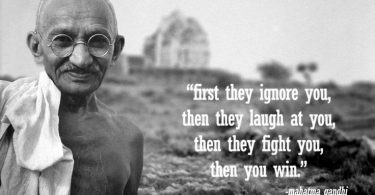Abstract: Yoga gives the holostic concept of health in the treatment psychosomatic disorders. Regular practice stabilizes the mind getting rid of excess emotions and uimproves the quality of life.
The term psychosomatic disorder is mainly used to mean … “a physical disease that is thought to be caused, or made worse, by mental factors”.
Some physical diseases are thought to be particularly prone to be made worse by mental factors such as stress and anxiety. e..g. psoriasis, eczema, stomach ulcers, high blood pressure, diabetes IBS and many functional disorders. The relation is difficult to prove. However, many people with these and other physical diseases say that their current mental state is affecting their physical disease.
According to one observational study, the magnitude of the problem is obvious: one in six participants consulting their family physician suffers from a somatoform disorder causing serious impairment. Though characteristic organic illness might not be identified when a psychosomatic condition is the case, there is an ailment that diminishes quality of life and distorts the perception of good health.
For example,
· A chest pain may be caused by stress and no physical disease can be found ( stress resulting into spasm of chest muscles is the cause)
· When we are afraid or anxious we may develop: A fast heart rate, palpitations, feeling sick (nauseated) , shaking (tremor) , sweating , dry mouth , chest pain, headaches, a knot in the stomach etc. or in general a feeling of discomfort.
As stress, anxiety and depression are chalked out as the main causes of various psychosomatic disorders, treatments to ease stress, anxiety, depression, etc. may help to the patients to overcome.
Amongst these three stress reaction is a state of ‘overdrive’ where our organs work overtime to enable us to keep functioning when under pressure – our fight-or flight response. Stress is giving rise to other negative emotions. There are various aspects of living that contribute to our stress levels. But it is equally true that one cannot avoid stress. It’s a part and parcel of life. We have to live with it. For e.g. When you take it positively fully accepting the situation it is eustress which boosts your drive and then you can perform well. But if you take it as a distress blaming the situation, then your performance goes down and the resulting emotions are anxiety, depression, hopelessness, hatred etc. So it’s up to you what is your attitude, how much you accept the situation and how do you look at the stress? And this is what Yoga does for the patients of psychosomatic disorders.
Yoga is the oldest holistic concept and therapy in the world to influence of individual response to a variety of stressors as follows..
· Helps us to change our attitude to look at stress improving tolerance and stamina to combat stress.
· Increases awareness of oneself and of one’s’ surroundings
· Reduces the agitations they feel
· A patient may be able to maintain a state of focused attention with greater ease and for longer periods as a short attention span and the tendency to be easily distracted, make it very difficult for patient to complete successfully
· Acceptance and adaptability of the situation helps to understand situation.
The effectiveness of yoga on varied parameters for mental disorders such as schizophrenia, depression, attention deficit hyper-activity disorder and patients with functional disorders has been approved.
Multi dimensional aspects of Yoga includes
· AAHAR-A healthy life nourishing diet to provide antioxidants to repair and heal.
· VIHAR-Proper recreational activities to relax body and mind) through Asanas, Mudras and Kriyas, Invigorating breath work that is pranayama.
· NIDRA-Includes conscious and subconscious relaxation.(Yognidra)
The eightfold path of Ashtanga Yoga includes
Yama, Pratyahara
Niyama, Dhyan,
Asana, Dharana
Pranayama,. Samadhi
BENEFITS OF YOGABHYASA-
· Yama-Niyama and various Yogic psychological principles Enhances self confidence and internal healing capacities through the cultivation of right habits and moral-ethical living.
· Asanas are described as steady and pleasurable postures. They generate a sense of relaxed lightness, improves the circulation and in turn nutrition of the part. It tones the muscles and adds vigor in life
· Balancing Asanas steadies the entire body, enhances a sense of ease with oneself and also enhances mental / emotional balance.
· Pranayama improves the lung capacity, throws out pollutants and very importantly helps to stabilize mind.
· Pratyahar. Dhyan and Dharana gives the power to concentrate in an unbroken flow on a particular object.
· Kriyas-. The efficiency of Asanas and Pranayama increases by Kriyas in which the accumulated toxins are cleaned preserving the health.
Let’s understand the mechanisms of making yoga effective for mental disorders/mental health.
Techniques to be followed while doing Asanas and Pranayama do not help to do them in a right way giving maximum physical benefits but stabilizes mind, balancing the emotions bringing equanimity of mind. They are as follows.
· Prayatnashaithilya (minimized efforts)- Asanas are to be done in a slow, steady, continuous, rhythmic manner without any jerk. This manner minimizes the efforts while doing Asanas. So there is no fatigue after practices. At the mind level it trains to work in a steady, calm and continuous manner. This conditioning of the brain percolates in the day today activities wherein the patient does his activities thoughtfully slowly shedding the excess emotions.
· Differential relaxation (Prayatnashaithilya)- Relaxing body parts not involved in the Asana while practicing helps to maintain asana for a longer time. At the mind level it trains to understand a critical situations avoiding hasty decisions.
· Concentration on breathing (Prandharana) and Pranayama– This helps the posture to become stable as well as it brings awareness about self. It also helps to bring a control on excess emotions in patients as breathing and emotions are interrelated. For e.g. when In anxiety breathing becomes fast, in anger it becomes irregular, in depression slow and when on seeing wonder it stops for a moment……so to have a control on emotions one should get a good control on breathing through Pranayama.
· Catharsis through Sakshibhavana– It is just sitting in any comfortable posture, closing eyes and just being a passive observer of the thoughts coming in the mind, ignoring them without involving in them. It’s just like sitting on the bank of river observing it’s flow and enjoying without getting actually in it. Helps to get rid of the excess thoughts in the mind.
Here are some practices which are helpful for patients of psychosomatic disorders to stabilize their mind
Makarasana (crocodile pose), Shavasana, Yogmudra, Tadasana(tree pose), Vakrasana, Parvatasana (mountain pose), Dhanurasana, Bhujangasana,
Prandharana(Concentration on breathing) in Padmasana and Vajrasana
Anulom viloma, Deep breathing ,Kapalbhati
Omkar chanting, Bhramari Pranayama
Being emotionally unstable, patients may not respond initially.
That’s why before practicing these asanas the patients of psychosomatic disorders should be relaxed through Shavasanaa and Makarasana, then by Prandharna i.e. concentration of mind on breath awareness is brought and then Asanas can be started. Patient can also be advised to do Suryanamaskara first to bring on flexibility of body.
CONCLUSION
So each moment of every day, one has a choice to hold on to feeling stressed or let go. It’s up to oneself how he or she takes it. With regular practice of Asanas and Pranayama following all the techniques Yoga changes patients’ attitude to look at the stress. Yoga helps patients take their health in their own hands. Yama and Niyama helps to change their life style .Thus Yoga increases the pain threshold and coping ability in response to external and internal stressors. This enhances the quality of life as seen in so many cases where other therapies are not able to offer any solace.
So it is rightly said in ancient textbooks of Yoga that…..
“Yogah cittavrtti nirodhah”
Yoga is to “gain mastery over the mind or control over the mind” (consisting of development of concentration on one hand and a capacity to calm down the mind or silence it effortlessly) and, harmonizes the disturbances.
REFERENCES
1. ‘Yoga For Health and Peace’-6th Edition(Book 2004), Publisher-Shree Book Centre, Yoga Vidya Niketan
2. ‘Pranayama’ by Dr. Sadashiv nimbalkar. Star Publisher Ltd. 2003
3. Images-tpevents.com, lifecalling.com, workouttrends.com





